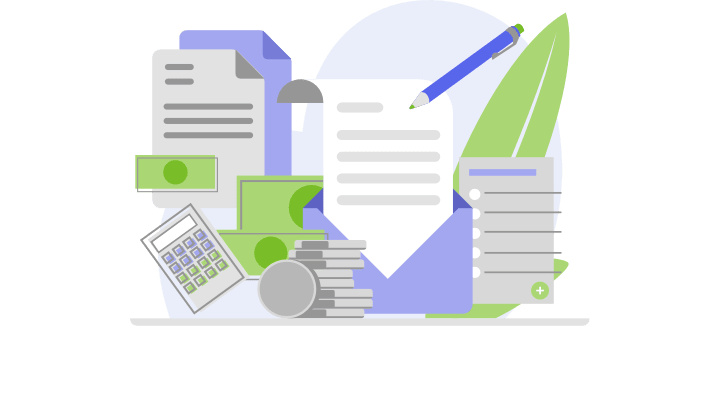
Among these, the declining balance method stands out for its approach to accelerated depreciation, allowing businesses to deduct higher expenses in the earlier years of an asset’s life. The double declining balance depreciation method is a form of accelerated depreciation that doubles the regular depreciation approach. It is frequently used to depreciate fixed assets more heavily in the early years, which allows the company to defer income taxes to later years. The latter two are considered accelerated depreciation methods because they can be used by a https://www.susermin.com/2024/10/23/what-is-a-shareholder-the-motley-fool/ company to claim greater depreciation expense in the early years of the asset’s useful life.

Accounting made for beginners

Suppose a company purchases a piece of machinery for $10,000, and the estimated useful life of this machinery is 5 years. In this scenario, we can use the formula to calculate the depreciation expense for the first year. Hence, our calculation of the depreciation expense in Year 5 – the final year of our fixed asset’s useful life Legal E-Billing – differs from the prior periods. Transitioning to straight-line depreciation during the asset’s useful life is often necessary. The DDB method, by consistently applying a rate to a declining book value, may not fully depreciate the asset to its salvage value by the end of its useful life. A switch ensures the asset’s book value reflects its salvage value at the end of its estimated life.
What is the double declining balance method of depreciation?

It turns the initial cost of the asset into an ongoing expense, spread across the asset’s useful life, giving you a more accurate financial picture. The biggest thing to be aware of when calculating the double declining balance method is to stop depreciating the asset when you arrive at the salvage value. That is less than the $5,000 salvage value determined at the beginning of the asset’s useful life. Note, there is no depreciation expense in years 4 or 5 under the double declining balance method.
Cash
- For an asset with a five-year recovery period using the mid-year convention, the rate of depreciation in year one would be 10 percent.
- Now that the rate is calculated, we can actually start depreciating the equipment.
- Below is the summary of all four depreciation methods from the examples above.
- The double-declining balance depreciation method produces a different charge for each period.
- Depreciation is the accounting process of spreading the cost of a tangible asset over its useful life.
- The journal entry will be a debit of $20,000 to Depreciation Expense and a credit of $20,000 to Accumulated Depreciation.
The company can calculate declining balance depreciation for fixed assets with the formula of the net book value of fixed assets multiplying with the depreciation rate. In contrast, the units of production method ties depreciation expenses directly to the asset’s usage. This approach is useful when the asset’s wear and tear correlate directly with its activity level.

- Each method has its advantages, suited to different types of assets and financial strategies.
- The cost of an asset normally comprises depreciation and repairs and maintenance.
- This convention provides a balanced method that reduces complexity while maintaining accuracy.
- Accumulated depreciation is the sum of all previous years’ depreciation expenses taken over the life of an asset.
- On top of that, it is worth it for small business owners, larger businesses and anyone owning a rental, to familiarize themselves with Section 179 depreciation and bonus depreciation.
Salvage value is the estimated resale value of an asset at the end of its useful life. Book value is the original cost of the asset minus accumulated depreciation. Both these figures are crucial in DDB calculations, as they influence the annual depreciation amount. If a company uses DDB for both financial reporting and tax, higher early-year depreciation can lead to lower taxable income, resulting in lower initial income tax payments and influencing cash flow.
- LegalZoom provides access to independent attorneys and self-service tools.
- Using the steps outlined above, let’s walk through an example of how to build a table that calculates the full depreciation schedule over the life of the asset.
- The amount used to determine the speed of the cost recovery is based on a percentage.
- A factory invests $50,000 in machinery with an expected useful life of 10 years.
- This method allocates a greater portion of an asset’s cost to depreciation expense in its earlier years.
- Suppose you purchase an asset for your business for $575,000 and you expect it to have a life of 10 years with a final salvage value of $5,000.
However, it is strongly advised to consult a tax professional to understand the specific implications this may have on your tax reporting. In practice, accountants must ensure the selected rate reflects the asset’s usage pattern and complies with accounting standards and tax the double declining balance method regulations. For example, the Modified Accelerated Cost Recovery System (MACRS), used in U.S. tax reporting, incorporates declining balance methods and provides specific guidelines for rates and asset classes. A more common depreciation method is the straight-line method, where the depreciation expense to be recognized is spread evenly over the useful life of the underlying asset.
- However, the straight line method does not accurately reflect the difference in usage of an asset and may not be the most appropriate value calculation method for some depreciable assets.
- An asset’s book value (original cost less accumulated depreciation) changes with DDB.
- There are several methods to calculate this charge, including the double-declining balance method.
- Then, calculate the straight-line depreciation rate and double it to find the DDB rate.
- Additionally, it more quickly provides your business with a greater depreciation deduction on your taxes.
Ready to Experience the Future of Finance?
This means that it takes more accounting effort, and is also more prone to calculation errors. In addition, the result is unusually low asset carrying amounts, which can give the impression that a business is operating with a lower fixed asset investment than is really the case. Companies will typically keep two sets of books (two sets of financial statements) – one for tax filings, and one for investors. Companies can (and do) use different depreciation methods for each set of books. To calculate depreciation using DDB, start with the asset’s initial cost and subtract any salvage value to find the depreciable base. Determine the straight-line depreciation rate (100% divided by the asset’s useful life).

